Stevia rebaudiana: [Cultivation, Associations, Pests and Diseases]
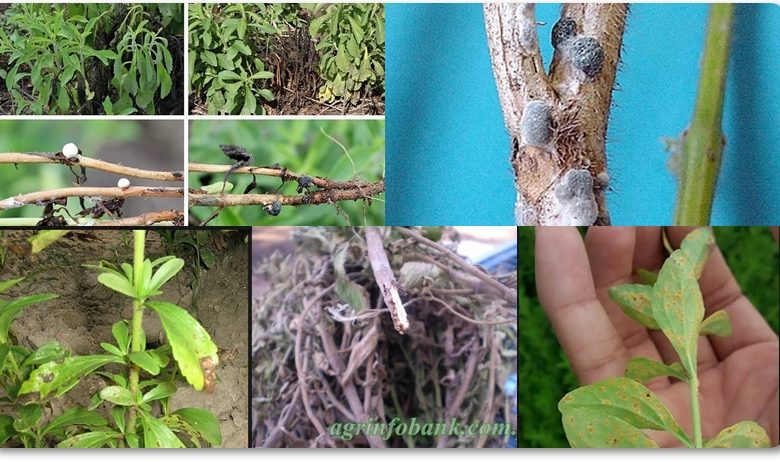
Important points when sowing Stevia rebaudiana
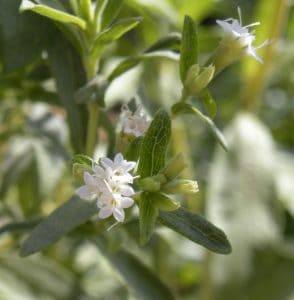 Where to sow? Half shade. It doesn’t need a lot of sunlight.
Where to sow? Half shade. It doesn’t need a lot of sunlight.- When? In spring and until mid-August.
- How do we prepare the land?: Removed, eliminating weeds. With substrate in equal parts of peat and sand.
- How do we water? With drip.
- How often do we water? Every two to 3 days in summer. Rest of the year frequently, without excess.
- Plagues and diseases? Mites and chewing, scraping and sucking insects. Botrytis, Septoria, Sclerotinia, Alternaria, Fusarium, Cercospora.
Stevia (Stevia rebaudiana bertoni) is a perennial herbaceous plant of the medicinal type that belongs to the Asteraceae family. It grows as a wild shrub in southwestern South America, especially Brazil and Paraguay.
Considered medicinal and highly valued worldwide, due to its composition rich in a low-calorie glycoside called stevioside, whose sweetening power in its pure and crystalline state is 300 times greater than cane sugar.
When to sow a stevia rebaudiana?
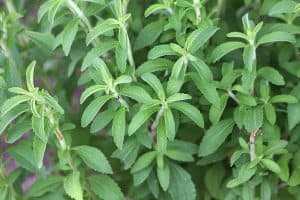 The best time to sow stevia is in spring (April-May, depending on the geographical area) when there is a suspected risk of frost.
The best time to sow stevia is in spring (April-May, depending on the geographical area) when there is a suspected risk of frost.
Although it is best to plant them indoors, since they need a temperature of 20-21°C to germinate.
It is pluriannual (that is, it can regrow 4-5 years), each spring it is reborn offering numerous new stems from below the roots.
In Spain, it is recommended to plant in March, to be able to harvest at the end of summer, although in colder areas it could be delayed until April or May, when temperatures are somewhat higher.
Where to do it?
The area of the nursery should be chosen according to the size of the land destined for the cultivation of stevia. However, the width of the nursery should not be greater than 6 meters, oriented in such a way that the sun’s rays enter in the morning and in the afternoon.
It is convenient to start cultivation in nurseries and produce seedlings, this facilitates irrigation and weeding, as well as other necessary care. Subsequently, the seedlings will be taken to the final field, generally during the fall.
Stevia in its natural state grows in the subtropical, semi-humid region of America, with rainfall ranging from 1,400 to 1,800 mm, distributed throughout the year, temperatures ranging from 24 to 28 °C and relative humidity from 75 to 85%.
How to prepare the land?
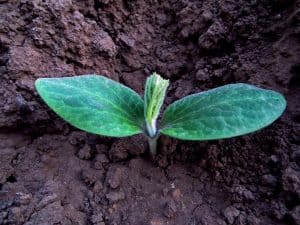 The soils for the cultivation of Stevia must have good drainage, be fertile, with a good content of organic matter, slightly acidic (pH between 5.5 to 6.5) and have sandy, sandy loam or clay loam textures.
The soils for the cultivation of Stevia must have good drainage, be fertile, with a good content of organic matter, slightly acidic (pH between 5.5 to 6.5) and have sandy, sandy loam or clay loam textures.
Avoid clay soils. The land must be free of sticks, stones. 3 wheelbarrows of soil should be removed and mixed with one of black forest soil or humus plus half a wheelbarrow of sawdust.
Rows of beds with a width of 1.2 m will be marked along the nursery with passageways on each side of the beds of 0.70 m. Wide, in the case of drip, sprinkler or rain irrigation.
How do we water a stevia rebaudiana?
Irrigation is essential in stevia, since the plant does not support long periods of drought. In case of irrigation by gravity, furrows of 0.30 meters are made. X loins of 0.30 meters.
And it is planted in a double row on the ridges, in addition every 4 ridges have a passageway of 0.70 m. It is recommended to use drip irrigation, which can be used for the application of liquid fertilizers.
Field experiences have proven that sprinkler irrigation increases phytosanitary problems, which led to the discarding of this type of system.
How do we plant a stevia rebaudiana step by step?
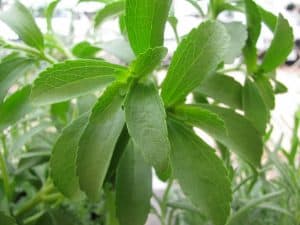 Stevia reproduces by achenes, showing heterogeneity in the resulting populations due to cross-pollination. Much of its achenes are sterile, light and easily dispersed by the wind.
Stevia reproduces by achenes, showing heterogeneity in the resulting populations due to cross-pollination. Much of its achenes are sterile, light and easily dispersed by the wind.
By means of cuttings, from a Stevia plant that regrows in spring, a production of 200 to 500 plants can be obtained, cutting it for as long as it grows. To grow Stevia, it is recommended:
- cut the final 10 cm of a Stevia bud about 20 cm high (make sure it does not end in flower). From these 10 cm of stem, remove the 2-3 leaves from the lower part, to facilitate their burial in the peat, pressing hard with your fingers around the stem so that it makes contact with the peat.
- Do not let too much time pass between the time it is cut and the shoot is planted. Preferably cut and plant the stevia or keep in water as if they were cut flowers.
- Place the pot in a shady place to prevent the sun from preventing rooting and water it 3 times a day (in the morning, at noon and in the afternoon).
- The depth of the pot must be a minimum of 25 cm, the root of the stevia does not present a deep development, and it must be planted at a distance of at least 50 cm from each other, if we want it to reach its largest size.
- At 28 or 30 days the shoot of the stevia plant will begin to straighten, and it is at this time, when some new leaves begin to come out, that it can be put in an area with more sun where it will not stop growing.
- After two months of replicating the shoot without roots in the pot, transplant a second time to the final place, to facilitate maximum growth of the plant.
- When the end of autumn is reached and it is full of flowers, it is time to cut it back, leaving it at a height of 10 cm and taking the opportunity to dry the remaining leaves.
- To dry the leaves correctly during the summer, make sure they are not exposed to direct sunlight, in order to preserve all the medicinal properties of Stevia.
Another consideration when growing stevia is that the stems of the plant are prone to snapping in the wind, so it’s a good idea to «pinch» the shoots every 3-4 weeks to encourage branching or use a stake.
Growing stevia can be successful in most climates, as long as it is protected from frost and a good organic fertilizer and frequent watering are used to ensure moisture in the substrate.
What favorable associations does it have?
The association of crops of compatible plants produces benefits with respect to their cultivation separately, in addition to the use of light, water and/or nutrients.
Stevia rebaudiana, being a medicinal plant, could be located near aromatic plants that can help control pests that affect stevia.
What pests and diseases attack stevia rebaudiana?
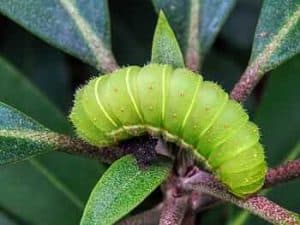 Stevia is a plant susceptible to attack by pests and diseases. It is said that its major phytopathological problems are those caused by fungi and nematodes.
Stevia is a plant susceptible to attack by pests and diseases. It is said that its major phytopathological problems are those caused by fungi and nematodes.
While the most frequent pests are mites and chewing, scraping and sucking insects. Among the insects that attack Stevia are aphids, cutworms, molluscs, slugs and beetles.
Among the diseases caused by fungi, attacks by Alternaria steviae, Septoria sp, Sclerotium sp, are mentioned as the most abundant. Also Rhizoctonia solani, Sclerotinium rolfsii, Botrytis cinerea, Fusarium sp, Cercospora steviae.
These factors negatively affect the performance and quality of the product, so strict control of them is recommended.
Bibliography and references
- Gallego, Jose T. (2016). Stevia, sweet medicine. RBA Books. Barcelona, Spain.
- Gallego, Jose T. (2015). How does stevia heal? The most natural and healthy alternative to sugar. RBA Books. Barcelona, Spain.
- Jarma O., Alfredo de Jesus; Combatt C., Enrique Miguel; Cleves L., José Alejandro. (2010). Nutritional aspects and metabolism of Stevia rebaudiana (Bertoni). A review. Colombian agronomy. National university of Colombia. Bogota Colombia. Reproduced from: http://www.redalyc.org/articulo.oa?id=180315602009
- Gonzalez Caballero, Raul Emilio; Paniagua Alcaraz, Julio Renan; Mayeregger, Edgar. (2002). Water need for the cultivation of stevia (Stevia rebaudiana, Bert.) calculated on the basis of microlysimeter reading. Agricultural Research Magazine. San Lorenzo-Paraguay. Reproduced from: http://www2.agr.una.py/revista/index.php/ria/article/view/184/182
- Jarma Orozco, Alfredo; Aramendiz Tatis, Hermes; Cleves Leguizamo, Alejandro. (2011). Phenotypic stability and plant densities of stevia genotypes (Stevia rebaudiana Bert.) in the Caribbean region of Colombia. Agronomic Act. National university of Colombia. Palmyra-Colombia. Reproduced from: http://www.redalyc.org/articulo.oa?id=169922373008


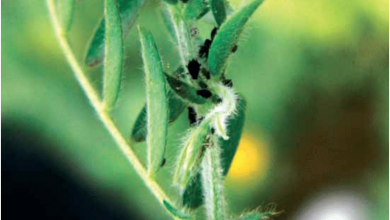
![Photo of Aptenia: [Cultivation, Irrigation, Care, Pests and Diseases]](https://www.complete-gardening.com/wp-content/uploads/2022/08/aptenia-cultivation-irrigation-care-pests-and-diseases-390x220.jpg)
![Photo of Boletus Edulis: [Characteristics, Cultivation, Harvesting]](https://www.complete-gardening.com/wp-content/uploads/2021/06/boletus_edulis_1601461386-390x220.jpg)